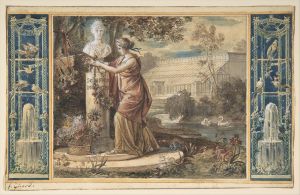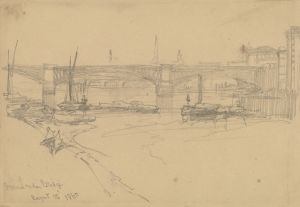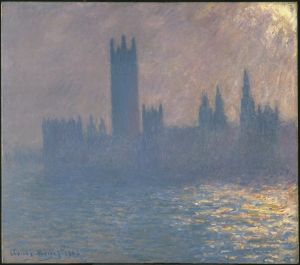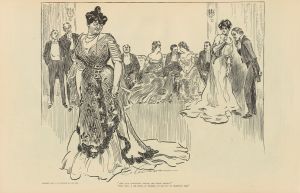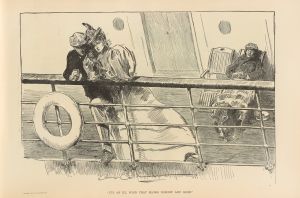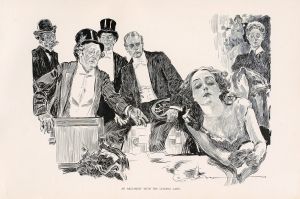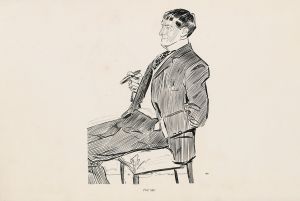
London Parks
A hand-painted replica of Charles Dana Gibson’s masterpiece London Parks, meticulously crafted by professional artists to capture the true essence of the original. Each piece is created with museum-quality canvas and rare mineral pigments, carefully painted by experienced artists with delicate brushstrokes and rich, layered colors to perfectly recreate the texture of the original artwork. Unlike machine-printed reproductions, this hand-painted version brings the painting to life, infused with the artist’s emotions and skill in every stroke. Whether for personal collection or home decoration, it instantly elevates the artistic atmosphere of any space.
"London Parks" is a drawing by the American illustrator Charles Dana Gibson, renowned for his creation of the iconic "Gibson Girl" image that became a symbol of feminine beauty and independence in the late 19th and early 20th centuries. Gibson's work primarily appeared in magazines, and he was celebrated for his pen-and-ink illustrations that captured the social dynamics and fashions of his time.
Charles Dana Gibson was born on September 14, 1867, in Roxbury, Massachusetts. He studied at the Art Students League in New York City and began his career as an illustrator in the late 1880s. His work was featured in publications such as Life, Harper's Weekly, and Scribner's, where he gained widespread recognition.
"London Parks" is one of Gibson's many illustrations that depict scenes of leisure and society. While specific details about the creation and publication of "London Parks" are limited, it is consistent with Gibson's style of capturing the elegance and social interactions of the upper classes. His illustrations often featured well-dressed men and women in various social settings, and parks were a common theme, reflecting the leisurely pursuits of the time.
Gibson's illustrations were characterized by their detailed line work and the ability to convey subtle social commentary through facial expressions and body language. His work often depicted the contrasts between the sexes and the societal expectations placed upon them. The "Gibson Girl," in particular, was portrayed as confident, independent, and fashionable, often seen engaging in activities that were considered modern for women of that era.
The setting of "London Parks" suggests a scene of genteel recreation, possibly capturing the essence of London's famous parks such as Hyde Park or Kensington Gardens. These parks were popular gathering places for the city's elite, offering a venue for socializing, promenading, and enjoying the outdoors. Gibson's choice to illustrate such a scene aligns with his interest in the social rituals and fashions of the time.
Gibson's work, including pieces like "London Parks," played a significant role in shaping the visual culture of the late 19th and early 20th centuries. His illustrations not only entertained but also provided a lens through which the public could view and critique the social norms of the day. The popularity of his illustrations helped to cement his reputation as one of America's leading illustrators.
In summary, while specific information about "London Parks" is limited, it is representative of Charles Dana Gibson's broader body of work, which focused on the social life and fashion of his era. His illustrations remain an important part of American art history, offering insights into the cultural and social dynamics of the time.





